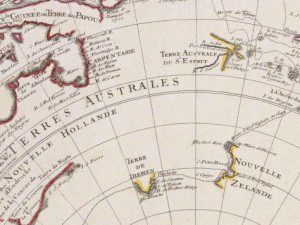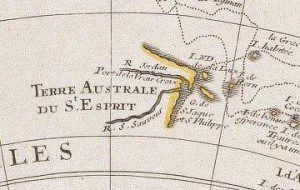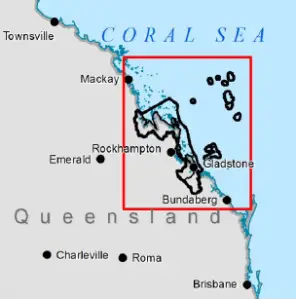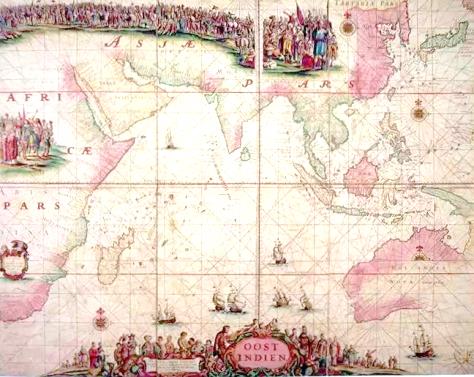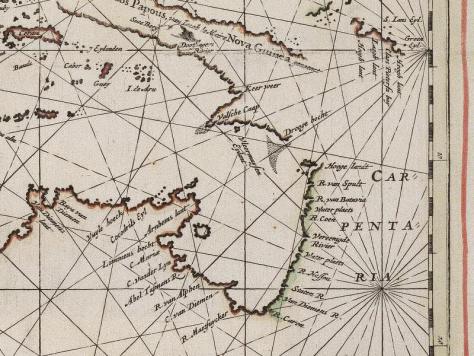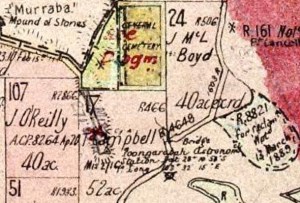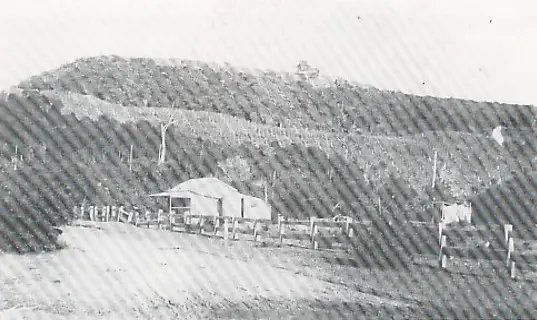Guest writer for Wake Up World
Altering maps so as to claim land is a classic practice of post war administrations. Conquer a country and wipe out their land’s records; it has happened all over the planet throughout history.
This is the story of how it happened on Australia’s east coast in the early 1600’s and, unfortunately, how it is happening still today, robbing the ancestral tribal peoples of their land, language and lore.
Great South Land of the Holy Spirit
The Portuguese arrival into the ancestral estates of the original Australians occurred in 1606 in what is now Gladstone, Queensland. Well, it wasn’t into the ancestral estates exactly, because islander refugees who had already arrived prior were occupying the area after their previous ancestral territory had been pushed inland by geological catastrophes. (For more information on this, please see my previous article: Arrivals in the Land of the Bird Tribes – Part 1.)
[pro_ad_display_adzone id=”110028″]
The Roman Catholic Church played a huge role in Portugese expeditions to ‘discover’ and claim the great southern continent, and in actually naming it ‘Australia’. The Vatican held the ancient maps of the great sea journeys into the southern latitudes – maps obtained during the Roman conquests of Egypt, long ago.
The Church is the origin of Law, and of land ownership titles (geospatial records). Just as ancestral Aboriginal lore, land and language are linked, defining boundaries of ancestral estates and languages, so too the Church has their law, land (tenure) and language (on maps) as the basis of acquisition and occupation in modern governance. This is why documenting Aboriginal languages and dual-naming processes are so important to geospatial administration, and although it does not recognize Original tribal lore/law, the descendant Crown government of today still collects Aboriginal tribal names on official government records.
The Catholic Church teaches that Australia was originally named the “Great South Land of the Holy Spirit” due to a Portuguese sailor called Pedro Fernandez de Quirà³s ‘mistakenly’ believing the New Hebrides (now Vanuatu) was the Great South Land. Many others disagreed with this teaching, most notably, Cardinal Patrick Francis Moran, as he found that the description of the colony of New Jerusalem that de Quirà³s recorded did not fit the geography of the New Hebrides site, but fits what is now Port Curtis in Gladstone, Queensland, on the east coast of Australia, located just below the Tropic of Capricorn.
The ‘Discoveries’ of Australia
An article, ‘The Discoveries of Australia’ by Mary Kalantis and Dr. William “Bill” Cope, explores Cardinal Moran’s analysis of de Quirà³s. It states…
“… And where was this first Australia, this Spanish Australia? De Quirà³s mistook the present day Vanuatu for the Great South Land, say the keepers of conventional historical wisdoms. But not Cardinal Moran, Irish-Catholic Archbishop of Sydney from 1884 to 1911. A scholar of prodigious capacity, a speaker of seven or eight languages and an historian of the Irish Catholic Church, Moran turned his mind to the voyages of de Quiros. He came to the subject with an Irish-Australian’s suspicion of the conventional wisdoms of the Anglo-Imperial establishment.”
In a book published in 1906 to commemorate Australia’s three-hundredth anniversary, Cardinal Moran examined all the documentary evidence of de Quirà³s’ voyage. He set out to prove that de Quirà³s was the discoverer of eastern Australia and that the first Christian settlement, albeit short-lived, was founded at the Port Curtis site, near Gladstone.
The settlement was called New Jerusalem by de Quirà³s and had its own River Jordan, as well as a second river, named the Salvador. According to The Voyages of Pedro Fernandez de Quirà³s as translated and edited by Sir Clements Markham, de Quirà³s proclaimed at New Jerusalem in May 1606:
“Be witness the heavens and the earth, and the sea and all its inhabitants, and those who are present, that I, the Captain Pedro Fernandez de Quirà³s, in these parts which up to the present time have been unknown … [W]ith authority from the Supreme Roman Pontiff, Clement VIII, and by order of the King, Don Philip III, King of Spain … I take possession of all the … lands that I have newly discovered … and all this region of the south as far as the Pole, which from this time shall be called Australia del Espiritu Santo.”
As recorded by Cardinal Moran in Discovery of Australia by De Quirà³s in the Year 1606, de Quirà³s reported his discoveries to the Spanish King in 1607:
“The greatness of the land newly discovered, judging from what I saw … is well established. Its length is as much as all of Europe and Asia Minor … and of such capacity that double the kingdoms and provinces of which your Majesty is at present Lord could fit into it … The Bay of Sts Philip and James contains 20 Leagues of shore … it is surrounded by a large population; at a very great distance is seen by day much smoke, and at night many fires…”
Moran explains, detail by detail, how de Quirà³s’ description matches that of Port Curtis on the Queensland coast, and not the port of Santo in the islands of Vanuatu which in Moran’s time were called the New Hebrides. His comparative analysis of the two sites included “the size of the bay, the two rivers (there is only one in Santo bay), the soil and the rocks, the mountains in the distance, the seven islands visible on the horizon, the distinctive marble deposits, and even the kind of pebbles on the beach. We know now that the smoke and fires de Quirà³s saw were characteristic of Aboriginal land clearing at the beginning of the dry season…”
This record demonstrates that Australia got its name – Australia del Espiritu Santo – from the Portuguese, who colonised the east coast 164 years before Cook claimed it in the name of the Crown.
The same article goes on to state…
“De Quirà³s left Callao, Peru in December 1605 with three ships. Accompanying him were three hundred people – Spaniards, Portuguese and others whose ancestry was of the Incas and other ancient peoples of Peru. On 1 May 1606, after crossing the Pacific Ocean, the ships entered a large bay in a place de Quirà³s believed to be the Great South Land.
“There are several interpretations of the name he gave this land. In one account, de Quirà³s called it Austrialia del Espiritu Santo, Austrialia of the Holy Spirit, in recognition of the Spanish King’s descent from the Royal House of Austria. Other accounts use the Spanish word for southern, Austral, and in these the land is called Tierra Austral del Espiritu Santo. In de Quirà³s’ own account, published as The Voyages of Pedro Fernandez de Quirà³s, 1595 to 1606, the proclamation he read when he took possession in the name of the King of Spain named the place Australia del Espiritu Santo.
“In the world of the English and their Australian descendants, Captain Matthew Flinders is credited with having named Australia. He was the first to map the full extent of the continent, ‘discovered’ and recorded in his voyages of 1801-03. When he published his Voyage to Terra Australis in 1814, he noted that the land had two different names: New Holland, as it was called by the Dutch who had discovered the western part, and New South Wales, as it was called by the English who had discovered the east. Since his voyages had now proven beyond doubt that New South Wales and New Holland were one and the same landmass, neither name remained satisfactory. So, in the interests of ‘geographical precision’, in A Voyage to Terra Australis, he suggested a return to a much older name, Terra Australis, a name the Dutch themselves had originally used on their maps. And, in a footnote, he makes another suggestion: Had I permitted myself any innovation upon the original term, it would have been to convert it to AUSTRALIA; as being more agreeable to the ear, and an assimilation to the names of the other great portions of the earth…”
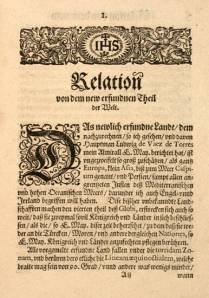 Cardinal Moran also described how the Spanish built a temporary Church named in honour of Our Lady of Loreto, celebrated Pentecost on 10th May 1606, named the new continent Australia del Espiritu Santo, and then, on 21st May held a Corpus Christi procession with the Blessed Sacrament — including sailor boys dancing before the Eucharistic Lord. It is also of note that on 19th May, two days before Corpus Christi, the land was seized amid earthquakes, some lasting more than an hour. Australia was still geologically volatile in those times.
Cardinal Moran also described how the Spanish built a temporary Church named in honour of Our Lady of Loreto, celebrated Pentecost on 10th May 1606, named the new continent Australia del Espiritu Santo, and then, on 21st May held a Corpus Christi procession with the Blessed Sacrament — including sailor boys dancing before the Eucharistic Lord. It is also of note that on 19th May, two days before Corpus Christi, the land was seized amid earthquakes, some lasting more than an hour. Australia was still geologically volatile in those times.
Cardinal Moran suggested that the natives at this time were those who now lived in the Torres Straits. Due to these earthquakes and no doubt the invasion over the mountains by the inland Aborigines, these natives moved north to the York Peninsula, the Torres Strait Islands and New Guinea; and this analysis is qualified by ancestral ‘oral knowledge’ holders of ancestral Lore, one group of which is the Ngarakbal Githabal who were invaded by the Portuguese when they travelled down to the lower latitudes along the east coast of Australia. It is further qualified by the remains of a Portuguese ‘fort’ located south of Byron Bay NSW, in the ancestral Ngarakbal estates. And the Bootheram (the Ngarakbal Githabal dialect name for the Dreamtime lore, or law of all Creation) of the Three Brothers, told in the 1950’s by Mr. Alex Vesper of the Ngarakbal Githabal, explains details of their arrival. (For more information on this, please see my previous article: Arrivals in the Land of the Bird Tribes – Part 2.)
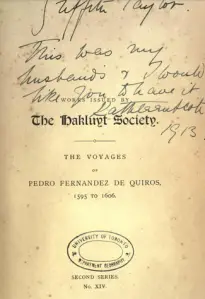 In his two volume publication for the King Philip III, de Quirà³s documented that, due to native hostility and problems within the crew, the new colony called Nova Jerusalem (New Jerusalem) — Port Curtis, Gladstone, Queensland — had to be abandoned.
In his two volume publication for the King Philip III, de Quirà³s documented that, due to native hostility and problems within the crew, the new colony called Nova Jerusalem (New Jerusalem) — Port Curtis, Gladstone, Queensland — had to be abandoned.
De Quirà³s is believed to have been of Marrano (Jewish Catholic) descent, therefore the sum of evidence suggests that Australia was discovered and named Australia by a Catholic Jewish man, in honour of the Holy Spirit. He also established a new knightly order called the Knights of the Holy Ghost for the defence of this new continent. Unfortunately, due to political machinations, his efforts and his name were defamed and were ultimately wiped from the official historical records.
The Relationship Between Portugal and Britain
The history of the relationship between Portugal and Britain dates back to the Middle Ages. English Crusaders aided Portugal in the Reconquista and, after taking the city in 1147, the first King of Portugal Afonso Henriques made the Englishman Gilbert of Hastings the Bishop of Lisbon. In 1373 the Kingdom of England signed the Anglo-Portuguese Alliance, the oldest alliance in the world still in force. The alliance was formalised by the Treaty of Windsor in 1386, and in 1387 Philippa of Lancaster, the daughter of John of Gaunt, 1st Duke of Lancaster, was married to John I of Portugal.
During the late 16th century England found itself fighting against Spain which, at this time, had annexed Portugal. In an attempt to restore Portuguese independence from Spain, the English Armada was launched, destroying both the Spanish and Portuguese military ships that formed the ‘Invincible Armada‘.
This conflict in turn led to the Dutch–Portuguese War, which involved Dutch forces from the Dutch East India Company and Dutch West India Company, in conflict with the Portuguese Empire. Beginning in 1602 and associated with the 80 Years’ War, the conflict saw the Dutch companies invading Portuguese colonies in the Americas, Africa, India and the Far East. It had little to do with the war in Europe and served mainly as a way for the Dutch to gain an overseas empire and control trade at the cost of the Portuguese. English forces also assisted the Dutch at certain points in the war and – crucially – this is why the Portuguese founded colonies on the east coast of Australia in 1606.
But this pre-crown Portuguese occupation of the east coast of Australia was wiped clean from the His-story, and from the maps, by the Crown administrators who fabricated the location of the Portuguese east coast colony to an obscure location in the New Hebrides (Vanuatu); just as they have wiped clean the remnants of Dutch occupation from three quarters of Australia’s west. This was done in order to lay claim to Australia for themselves, in the name of the Crown.
… and sadly, today, they are still altering the ancestral language attributions that they applied on the geospatial records (maps) in an attempt to validate their claim that they had been here first. (For more information, please see my previous article: Mapping the Bootheram – How the West Was ‘Won’ From the East.)
Ancestral Connections
Aboriginal Elders of the ancestral estates, like the Ngarakbal Githabal people on the most eastern point of the Australian east coast, know their history. They know why, and how, the Crown continues to change the languages and the maps to this day.
One such site, where this stylised form of extinguishment of ancestral connection to country has occurred, is in Tweed Heads NSW, where the ancestral lore of a significant djurebil (the Ngarakbal Githabal word for sacred site) of the Ngarakbal Githabal dialects has been transferred to a completely different location. The original language attributions have also been reclassified as a completely different language, altering the geospatial lands records and thus sanitising and ‘validating’ Crown tenure. Brilliantly diabolical stuff. This pattern of manipulation is quite common. In fact it can be traced all the way back to the British conquering of Egypt.
I’ve put together a short presentation showcasing one of the original ancestral djurebil sites that has been ‘relocated’ via administration. (You can watch it at the bottom of this article.) The site’s Bootheram (Dreamtime lore) was first recorded in 1957 as part of the Civil Rights Campaigns to have Aboriginal Australians legally recognised as being Human, a recognition that passed in the 1967 Australian Constitutional Referendum. One of the legal definitions of requirement to have Human status, however, is the presence of Religion – that’s according to the Church’s Law’s. All others are considered heathens and are treated as such.
What I find very revealing is that Cardinal Moran was trying to expose the truth about (one of) the pre-crown occupations of Australia’s East Coast in his 1906 publication, and likewise, 50 years later Mr. James Morgan from the Ngarakbal Githabal ancestral peoples told his custodial lore – his culture’s spiritual Bird Tribe Lore – to prove his ancestral pre-crown occupation to his homelands. And just as de Quirà³s and his work was actively defamed by the Crown, Mr. Morgan’s djurebil name and its ancestral attributions were altered also.
Mr. Morgan told the Bootheram of his djurebil ‘custodianship’. The Ngarakbal Githabal ancestral creation Lore’s totems centre on Birds, and they refer to themselves as Bird Tribes, or Feathered Serpent Lore Traditions. His significant djurebil is known as Dhungara-Ngaraian – meaning “Pelican Dancing Ground” – and, just as the past crown administrators surreptitiously transferred the site of the Portuguese colony at Gladstone in Queensland out to a fictitious location in the New Hebrides, and defamed de Quirà³s as the ‘discoverer’ of Australia’s east coast, so too today’s crown administrators have transferred the djurebil site under Mr. Morgan’s custodianship from its original mountainous location on the Lamington Plateau to a small hill in Tweed Heads on the NSW/Queensland which had originally been gazetted as Toongarabah.
This is just one of many djurebil sites that have been altered all over the continent. Crown administrators are literally moving mountains, and in the case of De Quirà³s, oceans, in order to maintain tenure of the great southern continent. And they are continuing to do it today, working to sever the “connections to country” and ancestral lore from its people.
While researching this history, I spent a lovely day with senior Elders, talking about this Portuguese settlement in Gladstone – the “Wakka-Burri” ancestral estate – and learning the truth of who actually named Australia; the Ancestral people. In the near future, I will compile and publish here what they told me. (You will love it.) In the meantime, here’s the little film presentation I put together.
I hope you enjoy researching global truth as much as I do. Please share these sorts of posts widely. Awakening the masses is an important facet of obtaining true global peace.
Thanks for reading. Hoo Roo!
As Above, So Below – Wisdom Mirrored
About the author:
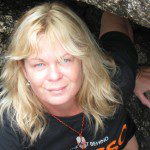 Aboriginal Star Lore author and lecturer Stella Wheildon was born, raised and still resides in the Tweed Valley on the most eastern point of the Australian Continent. Growing up in the foothills of one of the most significant sacred mountains of the ancient Aboriginal culture, Mt. Warning – Wollumbin – on the pathway of the sun.
Aboriginal Star Lore author and lecturer Stella Wheildon was born, raised and still resides in the Tweed Valley on the most eastern point of the Australian Continent. Growing up in the foothills of one of the most significant sacred mountains of the ancient Aboriginal culture, Mt. Warning – Wollumbin – on the pathway of the sun.
From a very young age, Stella listened and learned the Aboriginal stories from her Komillaroi grandmother, instilling a strong and vital connection to Nature and interest in the historical, mystical and physical lores of the ancient indigenous oral history, wisdom and traditions. She has also witnessed first-hand the suppression and denial of ancient knowledge by contemporary post-colonial systems.
In 1998 Stella commenced an environmental campaign to defend the sacred mountain Wollumbin from industrial mining and deforestation by the crown government. This led her to meet Mrs. Marlene Boyd, the Ngarakwal Githabul traditional lore holder of the mountain and a direct ‘bloodline to country’ descendant of the Seven Sisters Starlore – the ancient matrilineal culture of traditions, lore and customs of the Feathered Serpent Traditions of the Bird Tribes of Australia.
Over the course of a decade Stella has worked closely with the Ngarakbal and its marriage clan, the Githabal peoples, learning the lore and using it to protect the land and waters. Amassing a vast collection of previously unrecorded ancestral knowledge, and studying its profound layers of meaning, Stella became an intrinsic part of the tribe; she has been adopted into the moiety and works to halt further attempts at genocide of the land, lore and language of the ancestral peoples and the ancient cultures they embody.
Stella’s life work has become synonymous to the empowerment of the ancient Feathered Serpent Traditions and the truth of its connection to all tribal nations of the earth.
For more fascinating articles on the true history of Australia, visit Stella’s website stellawheildon.com.
[pro_ad_display_adzone id=”110027″]

